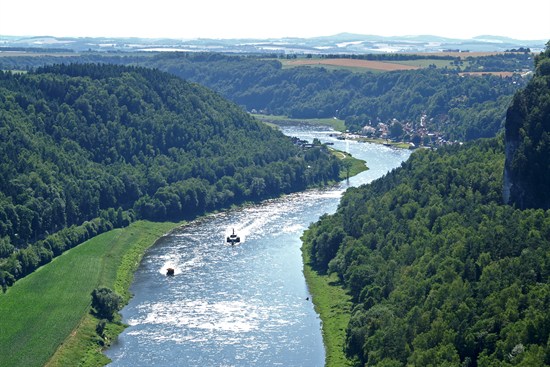Robert McSweeney
06.10.2014 | 5:02pmAir pollution from Europe resulted in a 25 per cent increase in river flows in Poland and Germany during the late 20th century, a new study finds.
The researchers say their findings show how the impact of burning fossil fuels is not just limited to increasing temperatures.
Solar dimming
In the sixties and seventies, air quality across much of Europe was very poor. Coal power stations and inefficient cars belched out tiny particles, known as aerosols, into the atmosphere. These aerosols caused widespread health problems and contributed to the famous ‘pea-souper’ smogs in London.
This new piece of research, published in Nature Geoscience, finds that these aerosols also caused an increase in the amount of water flowing in rivers across Europe.
Some sources of aerosols are natural, such as volcanoes, plant vapours and chemicals released by tiny sea creatures. However, since the industrial revolution, humans have been emitting more and more aerosols through fossil fuel burning.
One type of aerosols, called sulphate aerosols, are emitted from cars and power stations. Once in the atmosphere, these aerosols affect the climate in two ways. They directly scatter sunlight and reflect it back out to space. They can also react with clouds in complex ways, causing the clouds to reflect more light back out to space. This process, known as ‘solar dimming’, reduces the amount of the sun’s energy that reaches the Earth’s surface.
River runoff
So what’s the link with how much water is in our rivers?
Less solar energy hitting the earth means water at the surface evaporates more slowly. That means less water evaporates, and more flows into rivers.
Evaporation requires energy from the sun, so if less of this energy is reaching the ground, less water will be evaporated. Solar dimming caused a reduction in evaporation, the researchers say, leaving more water to flow into rivers.
Heavily-polluted
As emissions of aerosols peaked at the end of the seventies, solar dimming had a substantial impact on the amount of water in Europe’s rivers, the researchers find.
For the most heavily-polluted regions, this impact was fairly large. The study estimates the impact on annual river flow was a 21 per cent increase in the Wisla in Poland and the Elbe in Germany. The largest impact was a slightly-astonishing 25 per cent increase in flow for the River Oder, which runs from the Czech Republic and into Poland and Germany.

River Elbe. Shutterstock
To combat the pollution problem, governments across Europe passed clean air laws. Among other measures, these laws required sulphur levels in coal to be reduced. As aerosol emissions then decreased, so did river flows, the researchers find.
The research has implications for water availability in the future, the researchers say. River flows could reduce further as air quality improvements reduce aerosol emissions further still.
The study suggests emissions from fossil fuels have impacts beyond strengthening the greenhouse effect. Alongside increasing temperatures and changing rainfall patterns, changes in aerosols are another factor that will affect our water resources in the future.
Gedney, N. et al. (2014) Detection of solar dimming and brightening effects on Northern Hemisphere river flow, Nature Geoscience, doi:10.1038/ngeo2263

